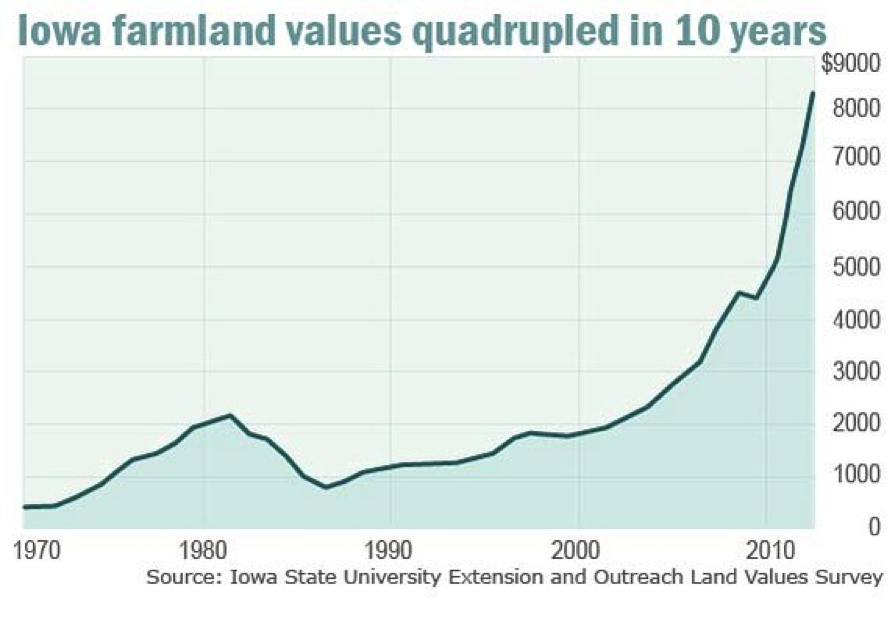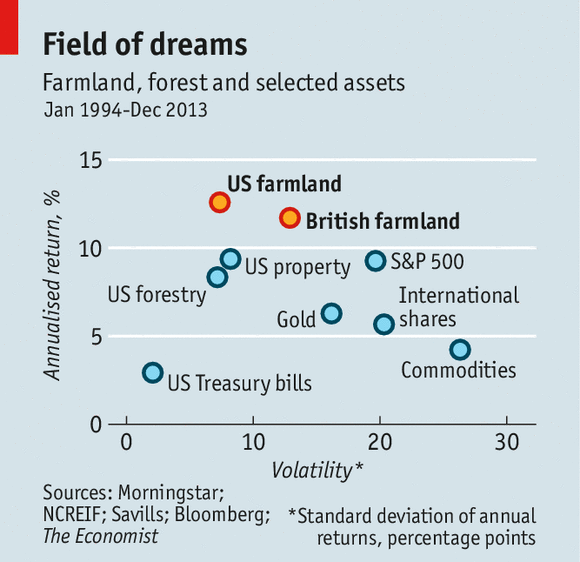
by Chris Becker
Its long been my contention that one of the best investment classes out there is property. But not the bricks and mortar kind or the steel, glass and concrete variety. It’s even more base – dirt!
Farms. Farmland. Agricultural. That is where the future prosperity lies, long term. Even if you don’t believe in climate change, the long standing and hard to reverse macro pressures including a wealthier (and healthier) Asia and eventually Africa amid a rising global population over the next century point to reliable food supply as the most valuable commodity. Besides clean drinking water of course.
What makes this chart interesting is the risk profile (lower drawdown for higher return) for farmland is better than shares and arguably traditional property. However recent outperformance has quite a bit of froth to it, particularly in the US with farm prices rocketing higher:

How can Australian investors take advantage of this long term opportunity? The direct option, for those with substantial superannuation balances, is buying farmland itself, with lease or other arrangements.
For most though, an indirect exposure via Exchange Traded Funds (ETFs) makes more sense, as part of a matrix of investment options within their portfolio. This would include both inflation and deflation hedges, plus other insurances and minimal but concentrated exposure to market volatility.
The Betashare ETF Code: QAG provides exposure to soft commodities (corn, wheat, soybeans & sugar) although it has a hedged currency component that has dragged on performance in recent years.
To be avoided at almost all cost are tax-advantaged “schemes” which are nothing more than a cheap way for financial advisors and funds to skim a lot of profit out of almost no risk, except to the investor. This is a form of negative gearing that is even more risky than property!
UBS via ETF Securities also has some ETP (products) that are unhedged in currency terms over grains, wheat, corn and general agriculture although these are new to market.
This is not a call to say Australia will be the next “food bowl of Asia”, a claim that is spurious at best and in fact creates additional value in already existing viable farmland. In a world where population is expected to be larger than 9 billion by 2050, where food demand is going to rise by at least 50%-70% (PDF) and dominant land policies and demographic profiles push farming to the periphery, it is more than likely to be a robust investment for the long term.
